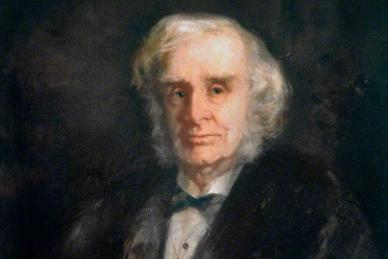
Alexander Peddie
(3 June 1810 – 1907)
College Role:
President

Notable Achievements
He was elected Fellow of the Royal Society of Edinburgh in 1863.
Peddie was president of the Royal College of Physicians of Edinburgh from 1878 to 1879.
Key Publications
- ‘Some cases of dropsy and gangrene’ (1832)
- ‘The contagious nature of puerperal fever and its intimate connexion with erisipelatous and phlebitis inflammation’ (1845)
Biography
It might have been expected that Alexander Peddie would become a minister since his was another of those dynastic families so often encountered in medicine and divinity: his father James and brother William between them served one parish for 110 years. Instead, following private schooling and Edinburgh High School, Peddie began working for a bank when he was 16.
Disappointed with this career choice, however, Peddie was advised by Dr John Abercromby to study medicine. Peddie became an apprentice to the up-and-coming surgeon James Syme who at that time was being boycotted by a group trying to prevent his appointment to the Royal Infirmary of Edinburgh. Syme’s response was to rent Minto House and use it as a private hospital with 24 beds, staffed by 13 apprentices. The boycott failed, and in 1833 Syme was appointed surgeon to the Royal Infirmary. He had to give up his use of Minto House but converted it into a 12-bed private hospital with Peddie, still a medical student, as superintendent.
In the previous year, 1832, Peddie had his first paper published (‘Some cases of dropsy and gangrene’), and continued with other papers in the following few years: ‘Some cases of poisonous fungi’, ‘Spinal apoplexy’, ‘The contagious nature of puerperal fever and its intimate connexion with erisipelatous and phlebitis inflammation’. The latter paper was published in 1845, two years after Wendall Holmes’ seminal paper on the subject – of which Peddie was unaware. He subsequently wrote on ‘The mammary secretion and its pathological changes’, ‘Diseases of Childhood’ and numerous papers on alcoholism and delirium tremens.
In 1834, however, Peddie had contracted typhus fever in a poor district of the city during one of the recurrent epidemics. He gave up his responsibilities in Minto House and, in the following year, graduated MD and obtained the Licence of the Royal College of Surgeons of Edinburgh. After a walking holiday on the continent he spent the next winter in Paris. On his return to Edinburgh he negotiated with Syme to take over the lease of Minto House until it expired 15 years later, running it as a very successful, entirely self-supporting private hospital, unique in Scotland at that time. All his clinical work thereafter focused on Minto House and a large private and consulting practice, including 35 years as principal medical officer for the Life Association of Scotland.
Peddie was elected a Fellow of the Royal College of Physicians of Edinburgh in 1845, served as its President from 1878 to 1879 and in 1863 was elected a Fellow of the Royal Society of Edinburgh. He was also a member of the Edinburgh Chirurgical Society, a Fellow of the Obstetrics Society and President of the Harveian Society. Over the course of his long and distinguished professional life, Peddie met and often worked with such men as Christison, Brown, Bennett, MacLagan, Fergusson, Begbie, Syme, Lister and Knox the anatomist.
Alexander Peddie will go down in history as someone who recognised what needed to be done and did not rest until he had helped to bring it about. He urged the formation of the Royal Hospital for Sick Children in Edinburgh (1867) and the Edinburgh Dental Hospital (1878). In 1878, as its President, he represented the RCPE at the opening of the new Royal Infirmary, and the following year attended the opening of the Simpson Memorial Unit.
Peddie’s membership of the Scottish Church meant much to him, but there was another side to his life that is less often mentioned – his skills in fishing, painting and singing. Many Edinburgh citizens who consulted Robert Christison, John Hughes Bennett, Douglas MacLagan or Peddie were probably unaware that, away from the wards, they formed the musical group known as ‘The Singing Doctors’ or ‘Doctors’ Glee Club’. Moreover, Peddie was for 20 years secretary of the Amateur Vocal Club in Edinburgh. Another of his hobbies was swimming, but on one occasion he almost drowned in an Edinburgh indoor pool, only to be rescued and resuscitated by none other than his own son.
In 1844 Peddie married Clara Elizabeth Sibbald, the eldest daughter of a Selkirk surgeon, Thomas Anderson. They had four daughters and four sons, and celebrated their golden wedding anniversary in 1894, nine years before Clara’s death.



